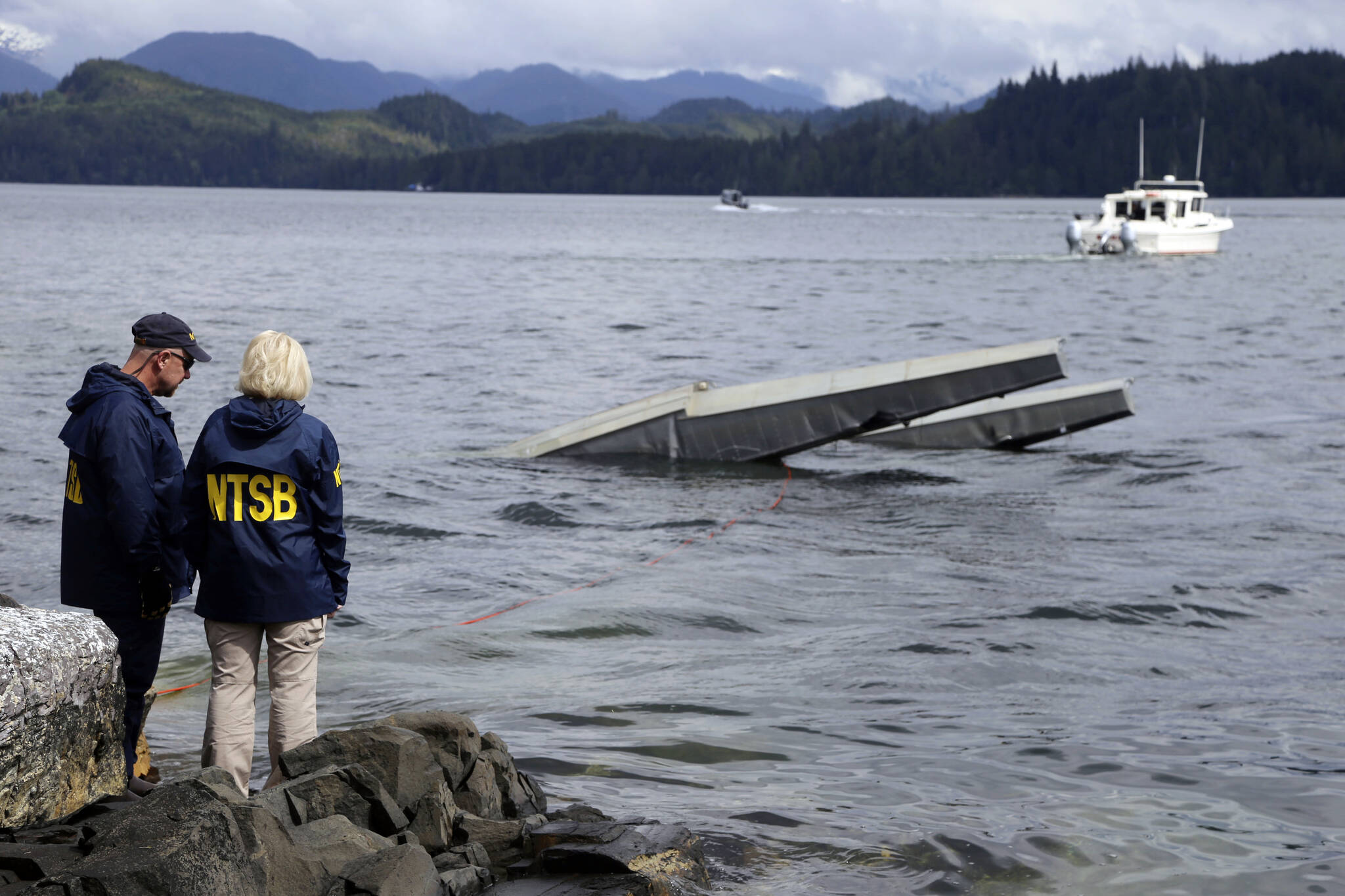WASHINGTON — Federal accident investigators say the government should issue regulations to improve the safety of air tours in part of Alaska where seven sightseeing planes have crashed since 2007, killing 31 people.
The National Transportation Safety Board said Tuesday that the Federal Aviation Administration should tighten rules about minimum visibility during flights and require more weather training for pilots who fly around Ketchikan. The coastal area near the southern tip of Alaska is known for mountainous terrain and quickly changing weather.
“There have been too many air tour tragedies in Ketchikan, a place with unique — but well understood — safety hazards that endanger the lives of pilots and passengers alike,” board Chair Jennifer Homendy said in a statement. “Unless the FAA acts swiftly, experience tells us to expect even more heartbreak and preventable loss of life.”
In a report dated Nov. 16 but released Tuesday by the NTSB, the board said it had issued 13 safety recommendations to the FAA in recent years, but the FAA has instead relied on operators following voluntary terms of a 2009 agreement. The NTSB said that has proved ineffective.
The board wants the FAA to adopt “special federal aviation regulations” for Ketchikan similar to requirements in Hawaii and the Grand Canyon.
The FAA did not immediately comment.
In the most recent crash, in August 2021, photos taken by passengers showed that the pilot — flying by visual cues instead of instrument readings used in poor visibility — flew below clouds until crashing into a forested mountain. The pilot and all five passengers died.
The NTSB investigates accidents including airplane crashes but has no authority to issue regulations. The FAA regulates aviation safety. The two have often clashed in recent years, with the safety board believing that the FAA doesn’t pay enough attention to its recommendations.

